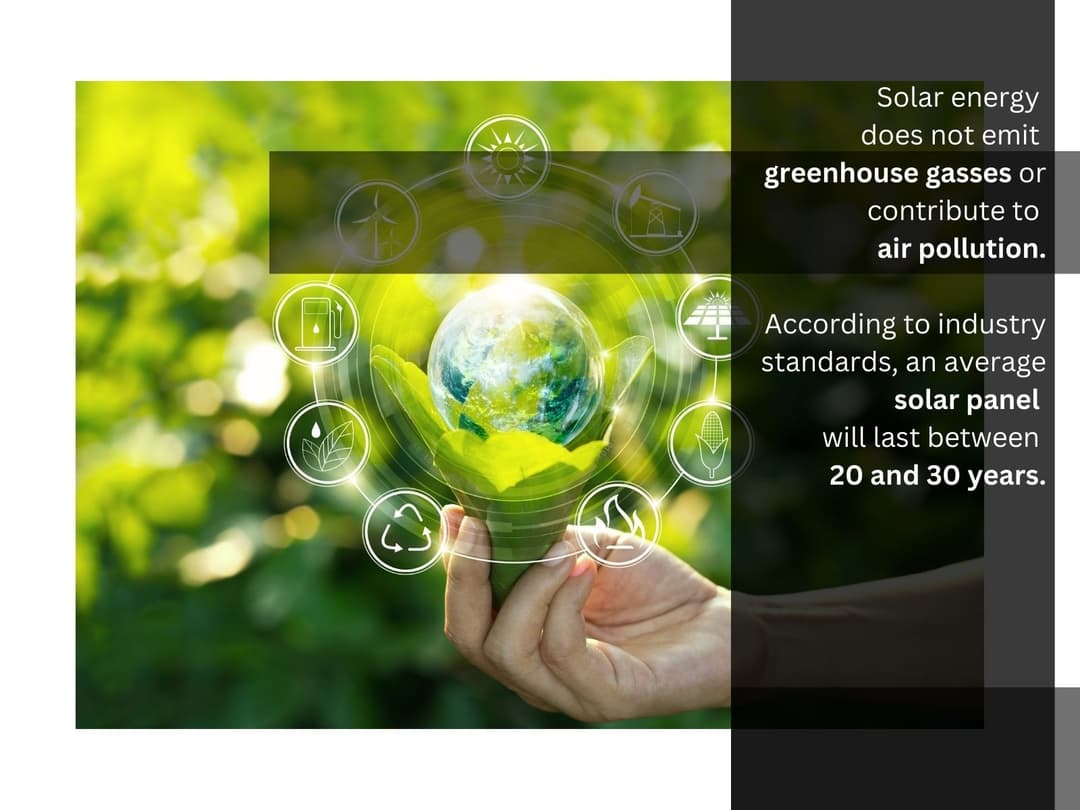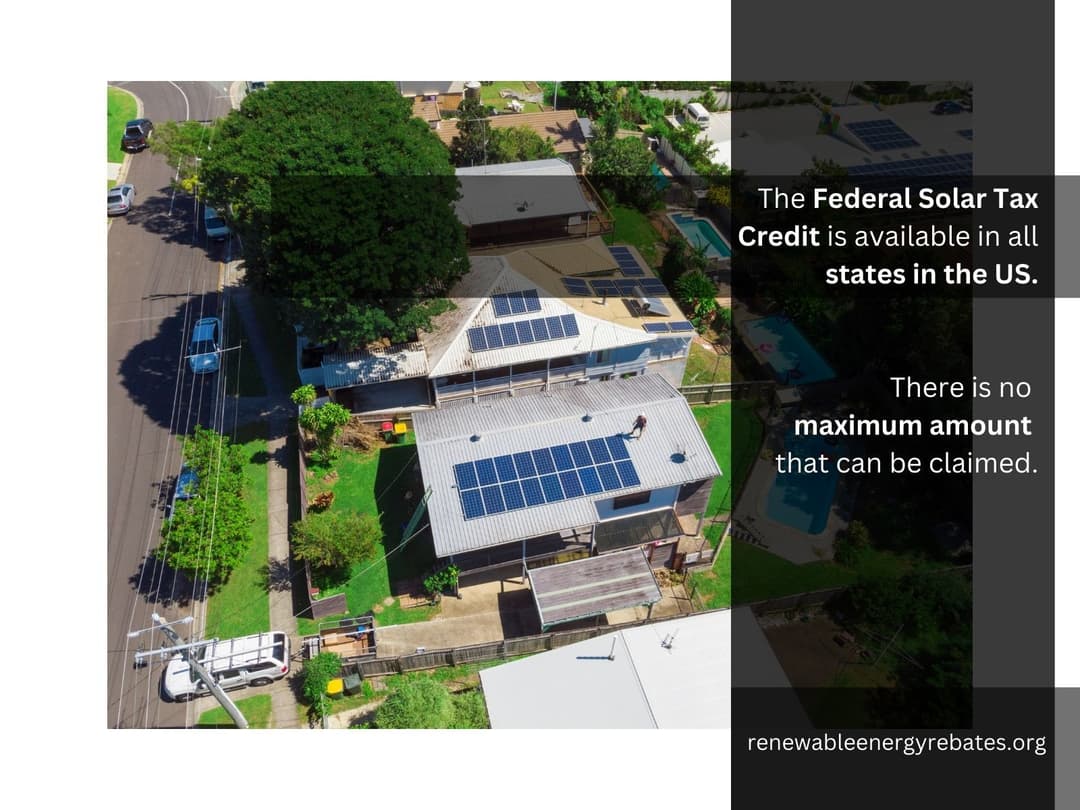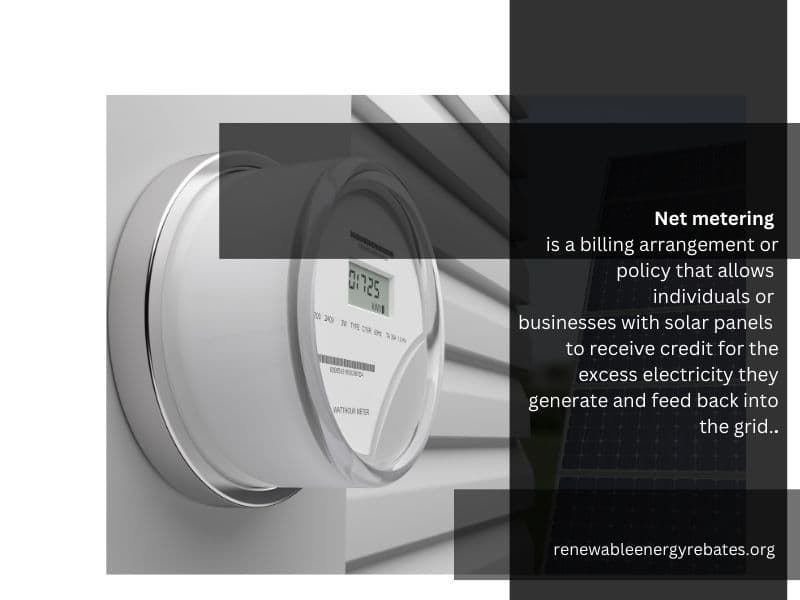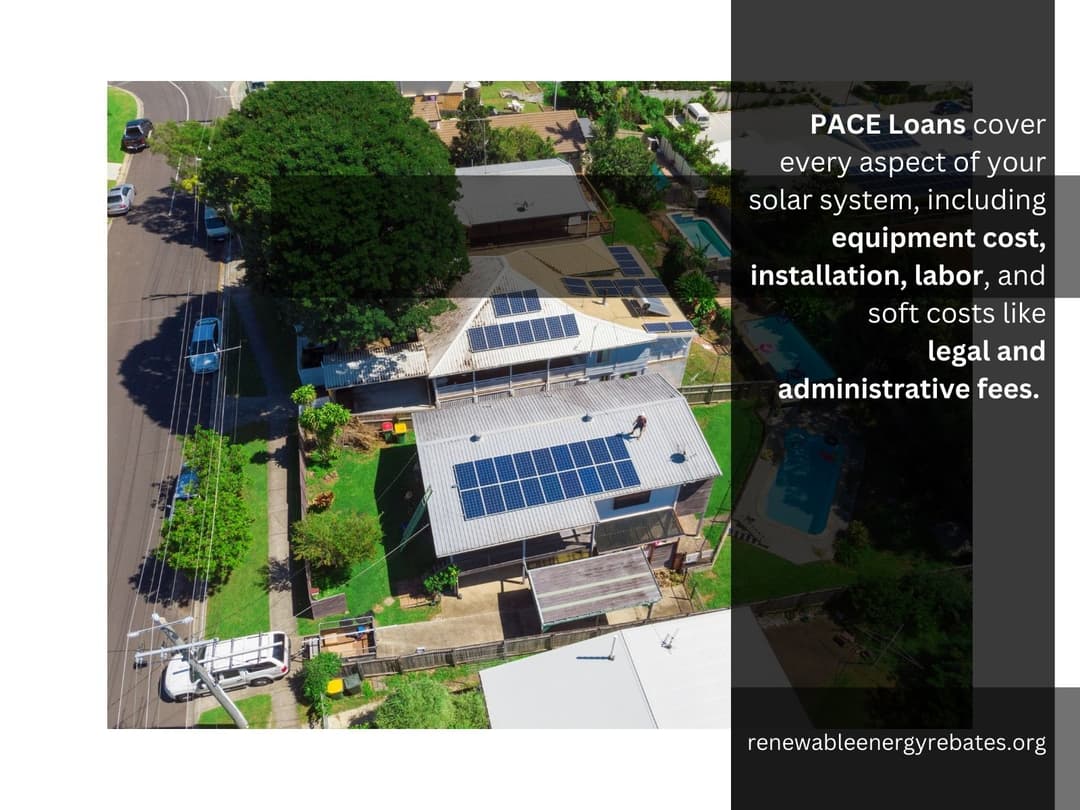South Dakota Solar Rebates and Incentives
How Much Can You Save on Solar in South Dakota?
Key Details
- Federal Solar Tax Credit is available for solar systems installed between 2017 and 2034
- The ITC covers 30% to 22% cost as tax credit
- South Dakota exempts 70% or first $50k from property tax
- The average cost of a solar panel in South Dakota is $2.39 per watt
South Dakota Energy Profile
South Dakota receives 4,322 KJ/m2 of annual sunlight. This is slightly higher than the national average of 4,234 sunlight hours.
In 2023, Pierre Solar Farm was the largest commercial-scale solar facility in the state, generating one megawatt of energy.
South Dakota is a prime location for solar installations and investments. As of 2023, the Mount Rushmore state has invested over $5 million in solar projects. South Dakota also projects to install 245 megawatts by 2029.

State and Federal Solar Incentives in South Dakota
| South Dakota Solar Incentives | State or Federal | Program Overview |
| Federal Solar Tax Credit | Federal | The federal solar tax credit covers a certain percentage of the cost of installing a solar system. |
| Renewable Energy Systems Property Tax Exemption | State | Solar inventive exempts solar users from paying property tax on installed solar systems.
Only PV systems less than 5 megawatt are eligible for this incentive. |
How Cheap or Affordable is Solar Energy in South Dakota?
Grid electricity costs an average of 10.4 cents per kilowatt-hour in South Dakota according to a US EIA 2021 report. In comparison, the average cost of a solar panel is $2.39 per watt, lower than the national average at $3 per watt. Also, solar energy pays back for itself within a few years.
| State | Number of solar Installations | MW Installed | Average cost for grip power (2021) | Average cost per watts |
| South Dakota | 2 MW | 10.4 cents/kWh | $2.39 per watt. |
Solar users also receive solar energy incentives. The South Dakota tax credit for solar panels offers a 30 percent discount in solar installation costs.
It will cost $13,353 to install a 6 kWh solar system in South Dakota. The 6 kWh solar system is often the preferred option for average-sized households in the state. Homeowners who install this system are eligible to get a federal solar tax credit. For solar systems installed in 2021, solar users can receive a 22% discount in tax credits.
| State | Cost of installing a 6kw system | Federal tax credit value 2021 (22%) |
| South Dakota | $13,353 | $2,978 |
For a 6 kWh solar system, you will receive up to $2,978 in tax credits.
However, solar systems installed in 2022 and 2023 will get 30 percent off the cost of installation. For a 6 kWh installed within this timeframe, users will get up to $4,005.9 in tax credit.
According to the EIA 2021 report, South Dakota consumed a total of 447.1 million BTUs per capita. This calculation covers energy consumption from these sectors:
| South Dakota's Sector | Energy Consumption per Capita (BTUs) |
| Residential | 78.4 million BTUs |
| Commercial | 69.5 million BTUs |
| Industrial | 189.7 million BTUs |
Note: The BTU or British Thermal Unit is a way to measure energy. A BTU is the measure of energy needed to increase the temperature of a pound of water by one degree Fahrenheit.
South Dakota does not require residents to purchase 100 percent of their electricity from renewable energy sources.
Federal Solar Tax Credit in South Dakota
The federal solar tax credit covers a specific percent of the cost of solar installation. Furthermore, this incentive comes in the form of tax credit. Solar homeowners can claim this credit when they file their annual tax returns.
The US Congress first passed the solar tax credit initiative under the Energy Policy Act of 2005. Although it was originally set at 30 percent, the rate reduced over the years.
To remedy this situation, the Congress passed the Inflation Reduction Act in August, 2022. The Act created a new rate schedule for the federal solar tax credit. Here's the new schedule:
- PV systems installed in 2022 are eligible for a 30 percent discount on the cost of installation. This rate also covers PV systems installed before August, 2022.
- Solar users who installed solar systems between 2023 and 2032 will get a 30 percent credit.
- Solar users will receive a 26 percent credit if the system is installed in 2034. The South Dakota tax credit for solar panels will further reduce to 22 percent for systems installed in 2034.
- There are no solar tax credits for panels installed in 2035 and beyond.

So, what expenses will the federal solar tax credit cover?
The federal solar tax credit covers these equipment:
- Solar panels
- Cost of labor for onsite installation, preparation, assembly, and mounting equipment.
- Inspection fees, permit fees, and developer costs.
- Solar wiring and inverters.
- Solar batteries with a capacity greater than 3 kWh. Keep in mind that this only applies to batteries installed after December 31, 2022.
Eligibility
You can claim the South Dakota tax credit for solar panels if you fulfill these criteria:
- You installed your solar system between 2017 and 2034.
- The solar system is installed at a primary or secondary residence in the US.
- You outrightly own the system. This means you either purchased it with cash or financed the purchase via loans.
- You are also eligible if you purchased an interest in a community-owned solar project.
- The solar system is new and installed for the first time.
Note: Leased solar systems are not eligible for this renewable energy tax credit.
How do I claim the Federal Solar Tax Credit in South Dakota?
South Dakota's residents can claim the federal solar tax credit via these steps:
Step 1. Ensure you're eligible to receive the federal solar tax credit. Check the previous section for the criteria. Also, only new solar systems are eligible for this incentive.
Step 2. You need the IRS Form 5695, Schedule 3 of 1040, and 1040 form. The Form 5695 is for claiming tax credit on using renewable energy equipment. It is also where you calculate your total tax credit for these installations.
Step 3. Fill out the form 5695 via these steps:
- Include the gross cost of the solar installation. Check your invoice and add the cost to the line 1.
- Next, line 2 to 5 is for any expenses on other renewable energy sources. This includes biomass, geothermal, and solar water heating.
- Include any rolled-over tax credit in the line 13 of the IRS Form 5695.
Step 4. Calculate your tax liability on form 1040. You must have completed section 1 to 18 before this step. Furthermore, determine how many credits you can receive in the tax year.
Step 5. Next, deduct the tax credit from the tax liability. If it exceeds your tax liability, write the remainder in line 16 of Form 5695.
Step 6. Add the renewable energy tax credit you can receive in line 5 of the Schedule 3 Form.
Step 7. File these tax forms online or via mail to:
Department of the Treasury
Internal Revenue Service
Ogden, UT 84201-0002
Internal Revenue Service
P.O. Box 802501
Cincinnati, OH 45280-2501
(use this address if you're including a check).
Net Energy Metering in South Dakota
As of 2023, net metering is not a statewide program in South Dakota. The state allows electricity utility companies to determine the guidelines for net metering. This means specifics of the program may differ for each utility company. Therefore, solar users may need to negotiate a net metering policy with their utility company.
Net metering is a contract between an invested-owned electric utility company and renewable energy users. In this contract, the utility companies are the buyers of excess solar energy generated by customers.
Solar users get paid in credit for generating excess solar energy. Furthermore, the credit is stored on a net metering meter that's installed on the user's property. When the solar output is low or insufficient to meet the energy demand, the customer uses the credit to pay for extra electricity from utility companies.

Here's a simple case study on how net metering works:
Jamie's PV system generates 5,000 kWh of electricity every month. In the previous month, he only consumed 3,500 kWh of electricity. This means he generated an excess of 1,500 kWh. This excess energy is sent to the utility company, which buys it at the retail rate.
So, Jamie gets the payment in the form of credit, not physical cash after every month. If he consumes more than his solar output, he uses the credit to get more power from the utility company.
Note: Utility companies will often deduct monthly charges and other fees from your stored credits.
Why is South Dakota yet to fully implement net metering?
The cost of electricity is the major reason why the state is yet to implement a net metering policy. In a normal net metering policy, utility companies must provide an above-market cost of electricity generation.
This would normally work in states with extremely high electricity market rates. However, South Dakota has one of the cheapest retail rates for electricity at $0.11/kWh.
How to Enrol for Net Energy metering in South Dakota
There's no general method for enrolling for net energy metering in South Dakota. According to the Public Utilities Commission, solar users must connect the PV system to an electricity grid. And further negotiate the rates for generating excess electricity. That said, an utility company can only pay you at a rate approved by the PUC.
You may contact your electric utility companies on how to file for net metering. Some solar installers also offer these services.
South Dakota Property Tax Exemption
South Dakota residents can receive a property tax exemption on installed renewable energy systems.
Under the SDCL 10-4-44, renewable energy systems less than 5 megawatts in capacity are eligible for the renewable energy incentive in South Dakota.
The South Dakota property tax exemption has a limit. The solar energy incentive covers 70 percent of the assessed value of the installed system. It may also apply to the first $50,000 of the system's asset value.
Besides this incentive, installing a solar system also increases the real estate value of your property.
South Dakota Property-Assessed Clean Energy (PACE) Financing
As of 2023, South Dakota is yet to implement a PACE (Property-Assessed Clean Energy) financing program. The PACE program is a solar loan program. It enables residential and commercial solar users to finance solar energy projects in exchange for an increased property tax.
The state's Assessor's Office will assess the property value and decide how much property tax for the installed system.
South Dakota Energy Consumption
South Dakota consumed 11.7 terawatts-hours of energy in 2021. This makes it one of the least energy-consuming states in the country. In the same year, it generated 12 terawatts-hours of power in the same year. South Dakota gets its electricity from both renewable and non-renewable energy sources.
Coal and natural gas resources supply about 25 percent of the state's generated electricity. Since 2008, there's been a steady decline in the use of coal for generating electricity. Renewable energy sources now power 75 percent of the state's energy demand.

Renewable Energy in South Dakota
Hydroelectric facilities, biomass, and wind energy plants are the major renewable energy source in the state. As of 2021, wind energy supplied 50 percent of the state's electricity demand. Furthermore, South Dakota had over 2,811 wind turbines generating a total of 5,525 megawatts of electricity in 2022.
South Dakota is also home to 1,770 dams which power about 30 percent of the state's energy demand. The Gavins Point Dam is an utility-scale power plant that generates over four megawatts in electricity.
Biomass is also an important renewable energy resource in the state. Biomass facility uses raw materials like wood pellets and animal manors to generate power. Although biomass currently powers 0.1 percent of the state's energy demand, there are massive projects to increase its capacity.
For example, South Dakota's Renewal Natural Gas (RNG) will product more than 200 million cubic feet of biogas.